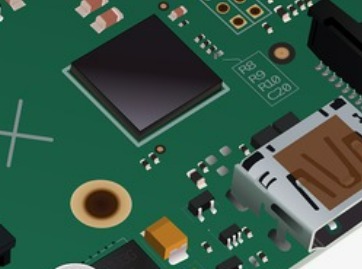
With regard to the point of "open window through hole" and "cover oil through hole" (the usage of PAD and VIA), many customers and design engineers often ask what this means when ordering a system, which option should I choose for my files
The following is the explanation of this problem point: Sometimes the conductive hole is treated with PAD attribute, and sometimes the key hole is treated with VIA attribute. The via attribute and pad attribute design are confused, which leads to wrong processing. This is also one of the problems frequently complained about. And for the circuit board production factory, in the processing of CAM data, some processing film engineers, because the customer design document is not standardized, and the wrong, to help customers modify the document, the design is not standardized, with their own experience to deal with the engineering data, which leads to and contributes to the customer's design is not standardized.

PCB hereby explains: What you did right last time does not mean that your document is correct! All engineers must pay attention to the design standards and specifications! Once again, PCB will strictly require all film processing engineers to keep the current situation of customer documents as much as possible! As far as possible to do according to the design specification and standard processing, not according to the so-called experience processing! Reflect the problem, so that you can design engineers do a reference, improve the quality of design and reduce the occurrence of problems! This article focuses on conductive holes, keyholes, and the connection between protel /pads/ and geber files Conductive holes: via keyholes:
pad is particularly prone to several problems:
First, via in the conversion process, because of the design is not standard or you are not clear on the conversion gerber setting rules, and cause problems when you send the gerber file, the factory can not distinguish those are through the hole and those are insert key holes, the only recognition is according to the file processing, which helps the welding layer that there is a window! The gerber you sent out is the film file, and the factory has no way to check whether it is conductive hole or keyhole. Please check the gerber file to see if it is helpful for welding layer. If it is, open the window, if it is not, cover the oil.
1. When your files are pads or protel, they are sent to the factory and required to be covered with oil. Please be careful to check if your pad is also used for via, otherwise green oil will be on your pad, which will lead to the failure of welding. The plug-in hole must be sprayed with tin. Why did you cover the oil and how did I use it? Please check the file when saying this, whether it was designed by pad or via! 3. When your files are protel or pads, send the files to the factory, and the order requirement is through hole cover oil. Many customers use pad(plug-in holes) to represent conductive holes, thus causing your conductive holes to open the window. Then please check your document design! At this point in time,
Again, press via if you are via, press pad if you are pad! Because no one will know that yours is a conductive hole, that is a plug-in hole, and via and pad are the only identifiers, please be clear! Four, how to design hole cover oil in protel or pads! This is the most standard practice, if the design standard, it will not go wrong! In protel, there is a tenting option in the via property. If you check it, it must be cover oil. Then what you turn out is all cover oil. When exporting soldermask (solder layer), just check the soldermask top -- via below, which means all pass through the hole to open the window. If you do not check, pass through the hole cover oil
To sum up: pad according to pad, this is the plug-in hole, via you have two choices, if you provide the original file, you can choose when placing the order, if you provide the gerber file, please check whether the gerber file meets your requirements!






